Home » being involved in » grammar + sites » modals (Page 3)
Category Archives: modals
BOOK of K E L L S Collège et cinéma Brendan and the Secret of Kells
Long ago, when the Vikings crossed the seas to raid Ireland, a boy called Brendan lived in a village not far from
the great monastery of Kells.
One terrible day, the Vikings attacked Brendan’s village
and left no one alive- except little Brendan!
click http://LearningApps.org/view3131279 and watch!
http://LearningApps.org/view1361649 about King Arthur, a very famous Celtic King
a forest spirit named Aisling.
the Eye of Collum-Cille
Crom Cruach, a Celtic pagan deity
Opening scene:
-“Catch him, Brendan! Don’t let him go!” The goose is running very fast.
-“We’ve got him!”
The walls of the Abbot’s room are full of drawings!
-“We are artists, not builders!” said Brother leonardo crossly.
A stranger arrives with a white cat!
From Brother Aidan’ s study room to the forest:
Brendan took down the stachel (bag) and opened it!
-“Oh! Brother Aidan! I… mean no harm. I just wanted to look at the Book.”
The “Chi Ro” page is the most glorious page in the entire book.
The monks use ink, the deepest emerald green ink! They grow an old oak trees in the forest.”
Brendan’s face: ‘I am not allowed in the forest. It is too dangerous.’
-“Oh, Pangur, I really want to help Brother Aidan. Maybe I could go into the forest.
The two friends crept through the passage between the stones. They hurried into the dark forest.
Finally, they reached a clearing (woods with trees) and stopped to catch their breath.
Wolves! Brendan picked up a stick and swung it around like a sword. The wolves started making noises.
Brendan closed his eyes and begun to pray.
http://LearningApps.org/view3188048
-“Is this your cat?”
A small white-haired girl, about eight years old, stood in front of the stone, holding Pangu Ban.
-“You’re a… a fairy! What are you doing here?”
-“What are you doing here- in my forest? You’ve come to spoil it, haven’t you? Where are the rest of your family?
Cutting down trees or hunting the animals, I suppose?”
-‘I haven’t come to spoil anything! And I don’t have a family.’
-‘No mother?’
-“No?” Brendan said, “no mother, and no father either.”
-‘I’m alone too. My name is Aisling, what’s yours?”
-‘Brendan. And I’m jsut here to find berries to make ink. Do you know where these grow?”
-‘I could help you find them’ Aisling said, ‘but only if you and your cat promise never to come into my forest again!’
-‘We promise.’
-‘Come on, then.’
Aisling led Brendan and Pangur throught the forest, stopping to ask birds and animals for directions to the oak tree.
Finally she stopped under a huge tree and pointed straight up. It was a very long way to the top.
Aisling looked very strong. She managed to climb trees, all of them! Tall trees, thick trees, large trees, all of them!
But Brendan had difficulties climbing, he was trying to breathe.
Aisling was already at the bottom.
-‘Are you alright?’ Aisling asked anxiously.
-‘I’m fine. I just jumped the last bit.’
Pangur looked at him and shook her head.
Brendan left the path and found a cave.
-‘Careful! Be carefu! Evil ahead of you!’
-‘What do you mean?’
‘Crom Cruach? It is not a story … The Dark One is real. Run!’
‘It isn’t your world, Brendan? You must trust me! We need to go home!’
Back at the Abbey:
‘Brendan! Where have you been?’
‘I … I went into the forest. For brother Aidan, to get berries to make ink… for the BooK.’
‘I said it to you. You must not and shouldn’t leave the Abbey.’
‘Yes, Uncle. I’m sorry, I apologize.’
‘Now, come along. I have work for you in the tower.’
Later that night…
-‘Aidan! Wake up!
The next day refugees arrived at the abbey gates. The Vikings were getting closer! The monks worked even harder on the walls.
And Brendan worked on his drawing. Aidan was very pleased with his progress.
-‘Brendan, I have a confession. I cannot do the Chi Ro page. My old hands are too shaky and my eyes too dim. YOU must do it.’
-‘Me? No. I would ruin it. There must be someone else-‘
-‘You just have to trust in yourself and your imagination.’
For once (for the first time in his life), Brendan was glad to hear Abbot Cellach calling him.
Aidan drew a shape on a piece of paper and placed Brendan’s hand on it. The Eye of Crom Cruach was there!
-‘I cannot give up the Book, Uncle!’
Saved by Aisling:
-‘The only key to the Tower is in the Abbot’s room. ‘
-‘Now, Little Cat.’ said Aisling softly ‘You must go where I cannot.’
Aisling begun to croon softly into Pangur’s ear. Pangur’s shape slowly dissolved into thin white cloud.
The mist-cat turned and twisted inside the room, then reached out and lifted the key from the hook by the door.
-Where are you going?’
-‘The Eye of Crom!’
-‘No, Aisling. It’s a crystal and I think there’s one in the Dark One’s cave.’
Aisling is very sad and also frightened. She doesn’t want her friend to go to Crom Cruach’s place.
-‘Crom Cruach took my people. It took my mother. You will die!’
-‘The Book is Knowledge and Hope and Inspiration. it will be a treasure far beyond our time, a treasure forever.’
-‘This place is hurting you, Aisling. You must go back.’
The fight with the monster:
Again and again, the monster tried to consume Brendan; each time Brendan ducked out of its way( trying to escape).
The serpent raced towards Brendan. Brendan drew a big circle. The monster screamed in frustration.
Brendan reached for the monster’s eye. The eye came free. Pangur Ban was happy to see her her friend alive and well.
In the scriptorium and the arrival of the Vikings:
Brendan lay asleep on his desk, his hand covering a small piece of vellum. Aidan gently moved his hand and looked at Brendan’ s
creation throught the crystal. Very small creatures seemed alive under the glass, perfect in every detail. He called the other Brothers and they looked
at Brendan’s creation through the crystal. They were amazed at Brendan’s work.
They told Brendan to go in the tower because it was too dangerous to stay with the Northmen. They slammed the door and locked it behind
him.
The monks said to Brendan :
-‘ The Northmen killed everyone on Iona; they will leave no one in Kells. Your uncle lived to protect you. Now I must protect you, for Cellach and for the Book.’
The Northmen had destroyed part of the book, the vellum pages started floating gently to the ground.
Brendan started collecting them. The wolf had big blue eyes and was watching them. He suddenly disappeared.
Time passes by. Brendan is now a young adult and he is paying a visit to his Uncle who is old.
from wikipedia:
Brendan Gleeson as Abbot Cellach: A former illuminator himself, Abbot Cellach now uses his talents for the purposes of designing a wall to protect the Abbey of Kells from invasion. He is very concerned for everyone’s safety, especially that of his nephew Brendan, to the point where he thinks of little else but the completion of his wall. Eventually, this leads to his downfall.
Liam Hourican as Brother Tang and Brother Leonardo: Two illuminators, the former from Asia and the latter from Italy.
Mick Lally as Brother Aidan: As the Vikings attacked the Scottish island of Iona, master illuminator Brother Aidan fled with his cat, Pangur Bán. In Kells, he acquires Brendan as an assistant.
Evan McGuire as Brendan: The main character of the film, twelve-year-old Brendan is bright, imaginative and curious, but leads a sheltered life due to his uncle forbidding him from venturing outside the walls of Kells. Brendan is very interested in the art of illumination, and spends much of his time in the scriptorium with some of the Brothers in the abbey. He is recruited as Aidan’s assistant to help finish his great book. His uncle Abbot Cellach, an approaching Viking horde, a snake god and his own fears stand in the way of bringing the finished book to the people.
Michael McGrath as Adult Brendan
Christen Mooney as Aisling: Aisling is a fairy, related to the Tuatha De Danann, living in the woods outside of Kells. She is a protector of the forest, and doesn’t like unwelcomed guests. At this point her age is uncertain, but she is likely to be hundreds of years old. Despite being terrified of Crom Cruach, the evil god that dwells in a cave deep within her forest, she becomes loyal to Brendan and does whatever she can to help him. She has many magical abilities, and often takes the form of a white wolf.
Paul Tylack as Brother Assoua: An illuminator from Africa.
Paul Young as Brother Square: An illuminator from England.
The name Book of Kells is derived from the Abbey of Kells in Kells, County Meath, which was its home for much of the medieval period. The date and place of production of the manuscript have been the subject of considerable debate. Traditionally, the book was thought to have been created in the time of Columba,[4]paleographic and stylistic grounds: most evidence points to a composition date ca. 800,[5] long after St. Columba’s death in 597. The proposed dating in the 9th century coincides with Viking raids on Iona, which began in 794 and eventually dispersed the monks and their holy relics into Ireland and Scotland.[6] There is another tradition, with some traction among Irish scholars, that suggests the manuscript was created for the 200th anniversary of the saint’s death.[7] possibly even as the work of his own hands.
Rescued by his uncle, Cellach,
Brendan has lived ever since among the monks in the monsatery,
under strict instructions not to go beyond the walls!
Have a look at the maps!
http://www.undiscoveredscotland.co.uk/usaccomm/index.html
photos of Iona, July 2007 by Marie André-milesi
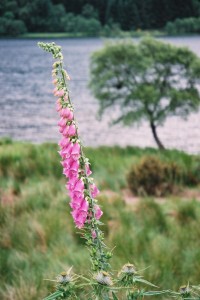
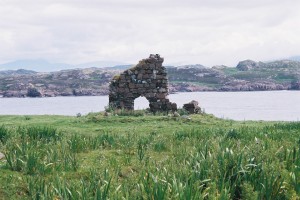
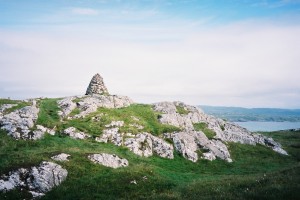
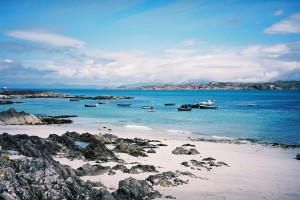
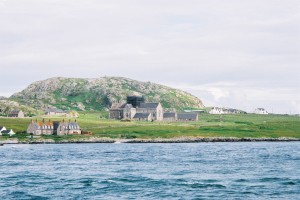
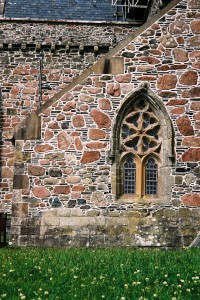 [youtube]http://www.youtube.com/watch?
[youtube]http://www.youtube.com/watch?

Key words:
A stranger arrives with a white cat!

B1- B2 The survival of Saint Paul’s Cathedral during the Blitz
How did St Paul’s survive the Blitz?

There was an unofficial lull in the Blitz attacks on London, for Christmas in 1940. But by 29 December, the German bomber planes had returned with renewed vigour. St Paul’s Cathedral famously survived, but how?
It became known as the Second Great Fire of London – the night 70 years ago that devastating air raids turned the capital into a conflagration.
29 December 1940

- London’s 114th night of the Blitz
- First bombs dropped at 1815 GMT, all-clear given just after midnight
- Bombers gave up due to fog in the Channel
It had been a Christmas underground for many people, who slept in Underground stations or festively-decorated air raid shelters. For two nights, the bomber planes had not come, and the anti-aircraft guns remained silent.
That peculiar silence had already been broken as dusk fell on 29 December. The enemy aircraft had returned, dropping incendiary devices and parachute mines in many tens of thousands. Their target? The City of London.
By 1830 GMT on that cold Sunday evening, the Square Mile was in flames. Banks, offices, churches and homes were under threat, in the same streets burnt to a cinder in 1666. A US war reporter based in the city cabled his office: “The second Great Fire of London has begun.”
Prime Minister Winston Churchill sent word that St Paul’s Cathedral should be protected at all costs – it would boost morale to save Christopher Wren’s masterpiece.
But there was a hitch – a major one. Water was in short supply. The mains were being bombed, and although hoses could be filled from the nearby Thames, it was at an unusually low ebb – and unexploded bombs lay in the mud.
Nor was that the only threat to life and limb. Bombs, embers and debris rained down on the streets as they raced to battle the flames.
Christmas in the Blitz

- Councils ran best-decorated shelter contests
- Demand high for very short Christmas trees, to fit inside cramped and low-roofed shelters
- Food was heavily rationed
- Gift-giving discouraged, and people urged to give to the war effort instead
Fireman Sam Chauveau was on duty that night. “By the time we finished tackling the fires on the roof of the [Stock] Exchange, the sky, which was ebony black when we first got up there, was now changing to a yellowy orange colour. It looked like there was an enormous circle of fire, including St Paul’s churchyard.”
Bombs rained down on the cathedral. Volunteer firewatchers patrolled its myriad corridors, armed with sandbags and water pumps to douse the flames.
At about 2100 GMT, an incendiary device lodged on the roof, and the burning mercury inside began to melt the lead of the iconic dome. But luck was on the side of the firewatchers. The bomb dislodged, fell to the floor of the stone gallery, and was smothered with a sandbag.
St Paul’s was saved.
But many more buildings were lost. Tram lines and water mains were destroyed, and the streets strewn with rubble. A dozen firemen died that night, and 162 civilians also perished. Those who survived firefighting duties suffered burns, eye problems and smoke inhalation.
The story goes that Air Marshall Arthur “Bomber” Harris, surveying the damage, remarked, “Well, they’re sowing the wind.” It was under his lead that RAF Bomber Command wreaked firestorms upon German cities. Before a 1,000-plane raid on Cologne, he told the newsreel cameras: “Now they are going to reap the whirlwind.”
and what about Katla?
Could another Icelandic volcano erupt soon?
|
By Victoria Gill
Science reporter, BBC News |
![]()

As scientists and air travellers alike keep a close eye on Iceland’s ongoing volcanic eruption, some reports suggest that another, much bigger, volcano could stir in the near future.
Katla is Eyjafjallajokull’s more active neighbour, and scientists believe that there may be a link between the two volcanoes.
This link has not been physically proven, explains Magnus Tumi Gudmundsson a geophysicist from the University of Iceland. A circumstantial, historical connection “is putting people’s eyes on Katla,” he says.
“We know of four Eyjafjallajokull eruptions in the past [dating back to AD 500] and in three out of these four cases, there has been a Katla eruption either at the same time or shortly after.
“By shortly, I mean timescales of months to a year.
“We consider that the probability of Katla erupting in the near future has increased since Eyjafjallajokull went.”
Kathryn Goodenough from the British Geological Survey points out that, as yet, there is no physical explanation for this apparent link.
|
Kathryn Goodenough
British Geological Survey |
“Scientists don’t yet know what the connection is,” she says.
“But we know there are fissures running between the two volcanoes. And they’re quite close to each other.
“They’re also being subjected to the same tectonic forces. So the chances are that if magma can find a pathway to rise beneath one of them, it can find its way to rise beneath the other.”
Researchers do know that the two volcanoes have separate magma chambers, but many suspect that these chambers are physically linked in some way, deep beneath the surface of the Earth.
“But this is only speculative,” says Dr Goodenough. “We don’t have geophysical evidence that makes that clear.”
Overdue eruption
Katla’s last eruption was in 1918. It lasted for three weeks and up to a cubic kilometre of material exploded through its vent.
“It’s a much more active volcano than Eyjafjallajokull – it has had about 20 eruptions in the last 1,000 years, so it erupts about once every 50 years on average,” says Professor Gudmundsson.

The combination of ice and magma makes for an explosive eruption
|
“At first glance people would say it’s now long overdue. But the larger the eruption, the longer the pause (in) time that follows it, and that 1918 eruption was large.”
At the moment, there is no seismic activity detectable underneath Katla that would indicate that magma is moving upward underneath it.
Scientists from the Icelandic Meteorological Office are looking at such signals and updating their website regularly with the seismic data that is being produced.
But Dr Goodenough points out that, with Eyjafjallajokull “we only had a few hours warning”.
“Seismic monitoring does not necessarily give you advance notice of an eruption.”
But it remains a case of watch, wait and look for signs of activity, because it is almost impossible to draw clear conclusions from the historical record, which is simply too short.
While both volcanoes have been repeatedly erupting for millions of years, the earliest eruptions on scientists’ records occurred less than 2,000 years ago.
“We haven’t established any physical link [between the volcanoes] – we only have this circumstantial evidence,” says Professor Gudmundsson. “And we simply don’t have enough data to be able to work out what the probability of a Katla eruption is.”
Flooding concern
Katla is much larger than Eyjafjallajokull, with a magma chamber about 10 times the size.
If and when it does go off, the combination of the magma and the large ice sheet covering the volcano could lead to explosive activity for a long time, says Dr Goodenough.
It is the explosive nature of the current volcanic eruption, which caused an ash plume to be sent high into the atmosphere and affect flights in the UK and Europe.
More worryingly for the people of Iceland, an eruption at Katla would probably cause major flooding. The volcano’s ice sheet is 600-700m thick and all of this ice would quickly melt on to the surrounding area, which is primarily agricultural land.
But Professor Gudmundsson says there are “no signs yet” of an impending eruption. “Our eyes are not glued to Katla, we are thinking about the eruption that is happening now.”
But Dr Goodenough adds that “substantial amounts of magma” are rising underneath both volcanoes.
“And it seems that when Eyjafjallajokull goes off, Katla tends to follow.”
Haiti and its strength : past present and future
Positive Piece of News Project
art one year after the eathquake
http://www.bbc.co.uk/news/world-12129690
http://www.bbc.co.uk/news/world-latin-america-10673099
Voodoo pilgrimage
http://news.bbc.co.uk/2/hi/world/latin_america/10593447.stm
Which recovery?
http://news.bbc.co.uk/2/hi/americas/8676957.stm
Listening comprehension: an orphanage in Haiti.
What is an orphanage?
an orphanage is a place for children who need to be taken care of when parents or families
cannot (can’t) care for them or will NOT (won’t ) take care of them .
I-Underline the correct answers:
A-The young woman who is working in the orphanage is called:
1- Martha- 2- Melinda 3- Melissa
What ‘s her nationality?
Welsh – Irish- Scottish -Canadian – French – American – British
B- The orphanage is located :
1 – at the very bottom of Port au Prince 2- in the mountains above Port of Prince (the capital city of Haiti)
3- by the seaside
4- in a beautiful place with a breathtaking or an amazing viewpoint
C- The name of the orphanage is :
Little Angels God’s Littlest Angels God’s Little Angels
II-We are given a tour of the orphanage
How many children (babies and toddlers) are living in the orphanage?
What is the name of the baby who has a scar but who is doing well?
Jude – Jade – John
What is the name of the place for babies who are in need of special care :
Special Care Unit Intensive Care Intensive Care Unit
III- Do you agree or do you disagree with the following statements?
Some babies will be reunited with their families later on in the future when they have a proper house to live in .
Some will be given for adoption .
Some babies are staying in the orphanage because their parents cannot take care of them as their house collapsed during the earthquake .
One baby is here because her mother can’t (cannot) take care of her as she has a defect in her legs .
IV- What about Ti’dada?
He is the son of one of the nannies .
He is lots of fun or on the contrary he is no fun.
It is a nickname .
He hasn’t got an older brother.
He will go back to his home once his house is rebuilt .
He is staying there until they can get their home rebuilt.
He has been abandonned by his family.
V- What about the lady who is talking to us? true or false?
She is enthusiastic and says she is happy to work there because it is the best place to be .
She tells us that volunteers come and help them on the balcony of the nursery.
She likes the balcony at the top of the house and she feels she is blessed to be there .
Her final words are: “What else can you ask for!” ” What can I say?”
VI -Express yourself :
In my opinion this video-clip is a relevant , interesting and genuine(authentique)– or uninteresting and boring – document about the work done .
Would you like to work in an orphanage? Where? Why ? Why not?
It is a very interesting report and I like the baby Ti’ Dada!
About Haiti!
It was the very first island to get its independance during the
slave trade ( commerce des esclaves)
It became the very first republic made for and by Black people.
Toussaint -Louverture had a lot of arguments with Napoleon
and both men (tous les deux) had the same personality:
they were determined and strong -minded. The “white ” emperor was facing the “black” emperor.
Haiti is the poorest or one of the poorest island in the world.
Haiti was the victim of one of the biggest earthquake.
Toussaint -Louverture was imprisoned in the Château de Joux!
He eventually died here! (il a fini par mourir ici) eventually= finalement
http://news.bbc.co.uk/2/hi/americas/8459653.stm
http://www.guardian.co.uk/commentisfree/2010/jan/13/our-role-in-haitis-plight


